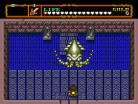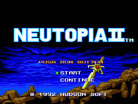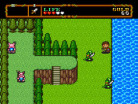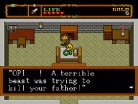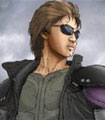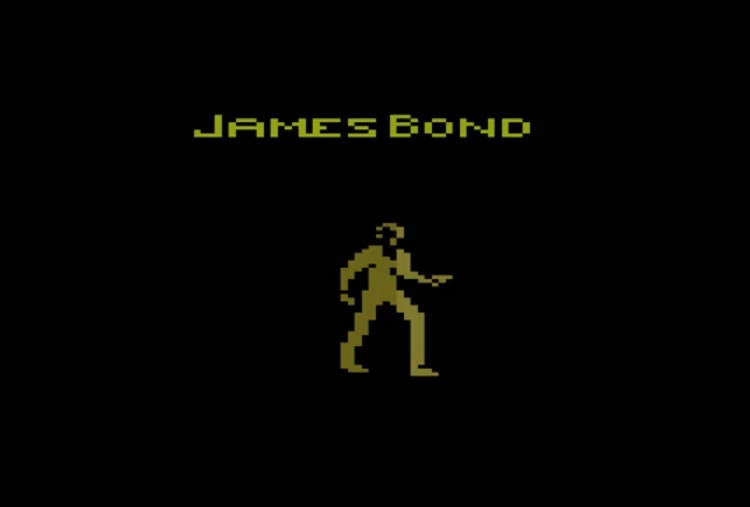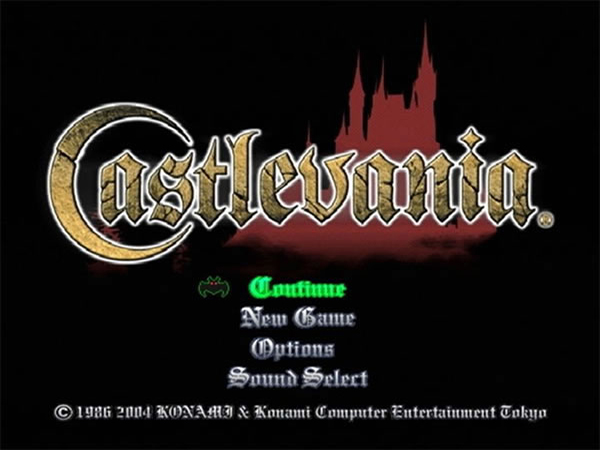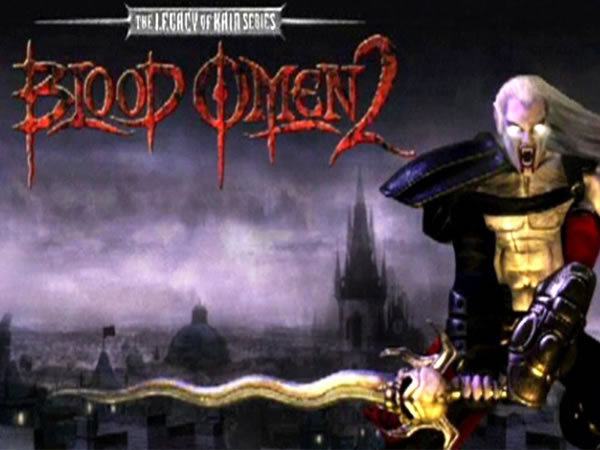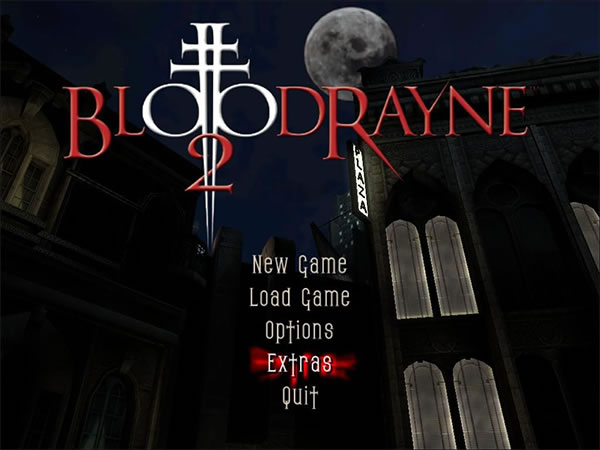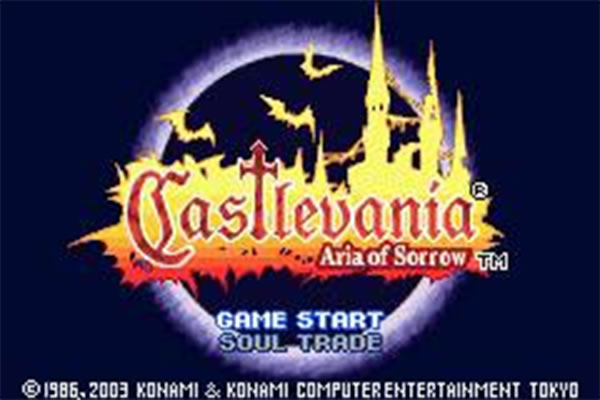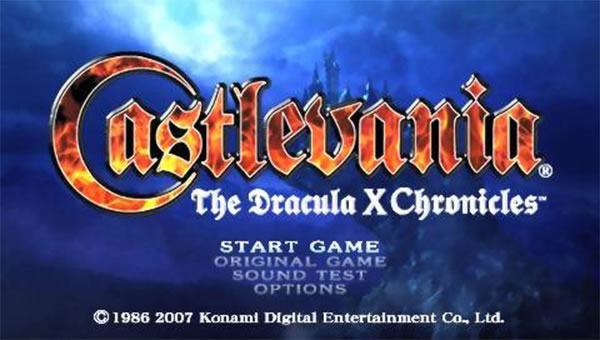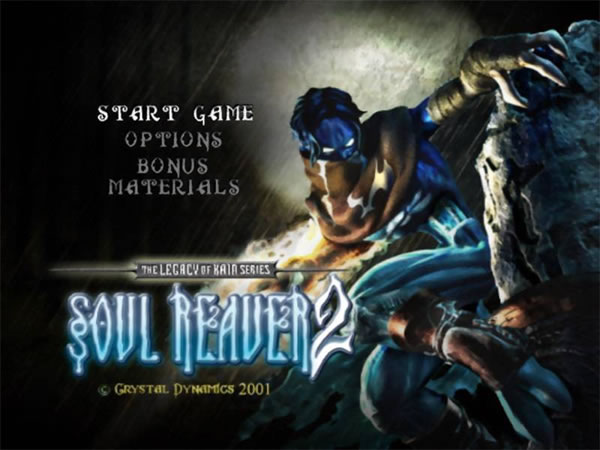- CLASSIC MAGAZINES
- REVIEW CREW
A show recapping what critics thought back
when classic games first came out! - NEXT GENERATION'S BEST & WORST
From the worst 1-star reviews to the best
5-stars can offer, this is Next Generation! - NINTENDO POWER (ARCHIVE)
Experience a variety of shows looking at the
often baffling history of Nintendo Power! - MAGAZINE RETROSPECTIVE
We're looking at the absolutely true history of
some of the most iconic game magazines ever! - SUPER PLAY'S TOP 600
The longest and most ambitious Super NES
countdown on the internet! - THEY SAID WHAT?
Debunking predictions and gossip found
in classic video game magazines! - NEXT GENERATION UNCOVERED
Cyril is back in this spin-off series, featuring the
cover critic review the art of Next Generation! - HARDCORE GAMER MAGAZING (PDF ISSUES)
Download all 36 issues of Hardcore Gamer
Magazine and relive the fun in PDF form!
- REVIEW CREW
- ELECTRONIC GAMING MONTHLY
- ELECTRONIC GAMING MONTHLY RANKS
From Mario to Sonic to Street Fighter, EGM
ranks classic game franchises and consoles! - ELECTRONIC GAMING MONTHLY BEST & WORST
Counting down EGM’s best and worst reviews
going year by year, from 1989 – 2009! - ELECTRONIC GAMING BEST & WORST AWARDS
11-part video series chronicling the ups and
downs of EGM’s Best & Worst Awards!
- ELECTRONIC GAMING MONTHLY RANKS
- GAME HISTORY
- GAME OVER: STORY BREAKDOWNS
Long-running series breaking down game
stories and analyzing their endings! - A BRIEF HISTORY OF GAMING w/ [NAME HERE]
Real history presented in a fun and pithy
format from a variety of game historians! - THE BLACK SHEEP
A series looking back at the black sheep
entries in popular game franchises! - INSTANT EXPERT
Everything you could possibly want to know
about a wide variety of gaming topics! - FREEZE FRAME
When something familiar happens in the games
industry, we're there to take a picture! - I'VE GOT YOUR NUMBER
Learn real video game history through a series
of number-themed episodes, starting at zero! - GREAT MOMENTS IN BAD ACTING
A joyous celebration of some of gaming's
absolute worst voice acting!
- GAME OVER: STORY BREAKDOWNS
- POPULAR SHOWS
- DG NEWS w/ LORNE RISELEY
Newsman Lorne Riseley hosts a regular
series looking at the hottest gaming news! - REVIEW REWIND
Cyril replays a game he reviewed 10+ years
ago to see if he got it right or wrong! - ON-RUNNING FEUDS
Defunct Games' longest-running show, with
editorials, observations and other fun oddities! - DEFUNCT GAMES QUIZ (ARCHIVE)
From online quizzes to game shows, we're
putting your video game knowledge to the test!- QUIZ: ONLINE PASS
Take a weekly quiz to see how well you know
the news and current gaming events! - QUIZ: KNOW THE GAME
One-on-one quiz show where contestants
find out if they actually know classic games! - QUIZ: THE LEADERBOARD
Can you guess the game based on the classic
review? Find out with The Leaderboard!
- QUIZ: ONLINE PASS
- DEFUNCT GAMES VS.
Cyril and the Defunct Games staff isn't afraid
to choose their favorite games and more! - CYRIL READS WORLDS OF POWER
Defunct Games recreates classic game
novelizations through the audio book format!
- DG NEWS w/ LORNE RISELEY
- COMEDY
- GAME EXPECTANCY
How long will your favorite hero live? We crunch
the numbers in this series about dying! - VIDEO GAME ADVICE
Famous game characters answer real personal
advice questions with a humorous slant! - FAKE GAMES: GUERILLA SCRAPBOOK
A long-running series about fake games and
the people who love them (covers included)! - WORST GAME EVER
A contest that attempts to create the worst
video game ever made, complete with covers! - LEVEL 1 STORIES
Literature based on the first stages of some
of your favorite classic video games! - THE COVER CRITIC
One of Defunct Games' earliest shows, Cover
Critic digs up some of the worst box art ever! - COMMERCIAL BREAK
Take a trip through some of the best and
worst video game advertisements of all time! - COMIC BOOK MODS
You've never seen comics like this before.
A curious mix of rewritten video game comics!
- GAME EXPECTANCY
- SERIES ARCHIVE
- NINTENDO SWITCH ONLINE ARCHIVE
A regularly-updated list of every Nintendo
Switch Online release, plus links to review! - PLAYSTATION PLUS CLASSIC ARCHIVE
A comprehensive list of every PlayStation
Plus classic release, including links! - RETRO-BIT PUBLISHING ARCHIVE
A regularly-updated list of every Retro-Bit
game released! - REVIEW MARATHONS w/ ADAM WALLACE
Join critic Adam Wallace as he takes us on a
classic review marathon with different themes!- DEFUNCT GAMES GOLF CLUB
Adam Wallace takes to the links to slice his way
through 72 classic golf game reviews! - 007 IN PIXELS
Adam Wallace takes on the world's greatest spy
as he reviews 15 weeks of James Bond games! - A SALUTE TO VAMPIRES
Adam Wallace is sinking his teeth into a series
covering Castlevania, BloodRayne and more! - CAPCOM'S CURSE
Adam Wallace is celebrating 13 days of Halloween
with a line-up of Capcom's scariest games! - THE FALL OF SUPERMAN
Adam Wallace is a man of steel for playing
some of the absolute worst Superman games! - THE 31 GAMES OF HALLOWEEN
Adam Wallace spends every day of October afraid
as he reviews some of the scariest games ever! - 12 WEEKS OF STAR TREK
Adam Wallace boldly goes where no critic has
gone before in this Star Trek marathon!
- DEFUNCT GAMES GOLF CLUB
- DAYS OF CHRISTMAS (ARCHIVE)
Annual holiday series with themed-episodes
that date all the way back to 2001!- 2015: 30 Ridiculous Retro Rumors
- 2014: 29 Magazines of Christmas
- 2013: 29 Questionable Power-Ups of Christmas
- 2012: 34 Theme Songs of Christmas
- 2011: 32 Game Endings of Christmas
- 2010: 31 Bonus Levels of Christmas
- 2009: 30 Genres of Christmas
- 2008: 29 Controls of Christmas
- 2007: 34 Cliches of Christmas
- 2006: 33 Consoles of Christmas
- 2005: 32 Articles of Christmas
- 2004: 31 Websites of Christmas
- 2003: 29 Issues of Christmas
- 2002: 28 Years of Christmas
- 2001: 33 Days of Christmas
- NINTENDO SWITCH ONLINE ARCHIVE
- REVIEW ARCHIVE
- FULL ARCHIVE
Neutopia II
Question #1083 on the video gamers' SAT test: "Neutopia is to the TurboGrafx-16 as (blank) is to the NES." If you've been taking notes, you know that the correct response is The Legend of Zelda. Like Zelda, Neutopia is a hybrid action/role-playing game in which you explore vast territories while doing battle with thousands of beasts in order to expunge evil from the world.
The look and feel of Neutopia II are identical to the first game; the same items and interface are used; the same obstacles are placed in your path. It's almost as if the creators had taken all the same graphics and puzzles, put them in a bag, tossed it around and ... voila: Shake and Bake arcade adventure.
The differences are few: a new selection of enemies, a slightly different plot (it's still the same theme, though: rid Neutopia of the encroaching evil) and a huge, single game world rather than a great number of smaller, separate worlds.
Neutopia II is written as a "next generation" continuation. You are the son of Furei, grandson of Murdock. Furei, we're told, died in an immense battle with Rafael, the Evil Overlord. Your mission begins as you search for your father, missing and presumed dead, who went to battle the new monsters that have shown up around the Neutopian countryside. Finding your father involves a tangle of smaller subplots and side trips, and, once you find him (no small task), you learn that the serious work is all still ahead of you.
Sounds good, but those who paid close attention to the first game recall that it involved Jazeta battling Dirth to save Neutopia, so I'm not sure where Furei, Murdock and Rafael came into the story. But these, as with most plots in classic video games, are very minor details.
Solving a subplot typically means going into a labyrinth, moving blocks around and defeating the underground dwellers. You'll uncover hidden rooms by blowing up walls with bombs, and eventually you'll locate the boss, defeat it and take its treasure. Then you explore new areas on the surface, visiting towns and talking to citizens, increasing your strength and the quality of your equipment. The only real variation is the look of the terrain and the difficulty of the obstacles, which get significantly tougher the further you venture into game. There's far less variety here than in something like Zelda III, which requires much more imagination and creativity in problem-solving. Still, Neutopia II does offer a ton of play value; the labyrinths are neither so long nor so involved that you get frustrated, and you're constantly receiving positive reinforcement by acquiring new skills, buying or finding interesting items and weapons and being assigned lots of new side tasks.
There are a few visual improvements and special effects in this second installment (I particularly liked the underwater sequences), but, for the most part, the graphics are identical to those in the first game: not very detailed, very cartoony, more typical of an 8-bit machine than a 16-bit machine. I did notice a few slowdowns when the screen was crammed with enemies, but this was rare. Sound effects and music are decent; there's enough variety in the music that you don't go nutsoid from the repetition. There's no battery back-up, but you're frequently given a 48-character password (yowch!), and it seems to contain an amazing amount of information.
I enjoyed Neutopia II, despite the cookie-cutter graphics and its overall similarity to the first game. It's a long game, which makes it a value, yet it moves along quickly. Although this game is derivative of the Zelda series, it would be nice to see this story brought back and turned into a brand new game for one of the newer consoles. As it is, Neutopia II is a disappointing Zelda clone that should have been a lot more inventive than it actually is.
The look and feel of Neutopia II are identical to the first game; the same items and interface are used; the same obstacles are placed in your path. It's almost as if the creators had taken all the same graphics and puzzles, put them in a bag, tossed it around and ... voila: Shake and Bake arcade adventure.
The differences are few: a new selection of enemies, a slightly different plot (it's still the same theme, though: rid Neutopia of the encroaching evil) and a huge, single game world rather than a great number of smaller, separate worlds.
Neutopia II is written as a "next generation" continuation. You are the son of Furei, grandson of Murdock. Furei, we're told, died in an immense battle with Rafael, the Evil Overlord. Your mission begins as you search for your father, missing and presumed dead, who went to battle the new monsters that have shown up around the Neutopian countryside. Finding your father involves a tangle of smaller subplots and side trips, and, once you find him (no small task), you learn that the serious work is all still ahead of you.
Sounds good, but those who paid close attention to the first game recall that it involved Jazeta battling Dirth to save Neutopia, so I'm not sure where Furei, Murdock and Rafael came into the story. But these, as with most plots in classic video games, are very minor details.
Solving a subplot typically means going into a labyrinth, moving blocks around and defeating the underground dwellers. You'll uncover hidden rooms by blowing up walls with bombs, and eventually you'll locate the boss, defeat it and take its treasure. Then you explore new areas on the surface, visiting towns and talking to citizens, increasing your strength and the quality of your equipment. The only real variation is the look of the terrain and the difficulty of the obstacles, which get significantly tougher the further you venture into game. There's far less variety here than in something like Zelda III, which requires much more imagination and creativity in problem-solving. Still, Neutopia II does offer a ton of play value; the labyrinths are neither so long nor so involved that you get frustrated, and you're constantly receiving positive reinforcement by acquiring new skills, buying or finding interesting items and weapons and being assigned lots of new side tasks.
There are a few visual improvements and special effects in this second installment (I particularly liked the underwater sequences), but, for the most part, the graphics are identical to those in the first game: not very detailed, very cartoony, more typical of an 8-bit machine than a 16-bit machine. I did notice a few slowdowns when the screen was crammed with enemies, but this was rare. Sound effects and music are decent; there's enough variety in the music that you don't go nutsoid from the repetition. There's no battery back-up, but you're frequently given a 48-character password (yowch!), and it seems to contain an amazing amount of information.
I enjoyed Neutopia II, despite the cookie-cutter graphics and its overall similarity to the first game. It's a long game, which makes it a value, yet it moves along quickly. Although this game is derivative of the Zelda series, it would be nice to see this story brought back and turned into a brand new game for one of the newer consoles. As it is, Neutopia II is a disappointing Zelda clone that should have been a lot more inventive than it actually is.
HOME |
CONTACT |
NOW HIRING |
WHAT IS DEFUNCT GAMES? |
NINTENDO SWITCH ONLINE |
RETRO-BIT PUBLISHING
Retro-Bit |
Switch Planet |
The Halcyon Show |
Same Name, Different Game |
Dragnix |
Press the Buttons
Game Zone Online | Hardcore Gamer | The Dreamcast Junkyard | Video Game Blogger
Dr Strife | Games For Lunch | Mondo Cool Cast | Boxed Pixels | Sega CD Universe | Gaming Trend
Game Zone Online | Hardcore Gamer | The Dreamcast Junkyard | Video Game Blogger
Dr Strife | Games For Lunch | Mondo Cool Cast | Boxed Pixels | Sega CD Universe | Gaming Trend
Copyright © 2001-2025 Defunct Games
All rights reserved. All trademarks are properties of their respective owners.
All rights reserved. All trademarks are properties of their respective owners.






